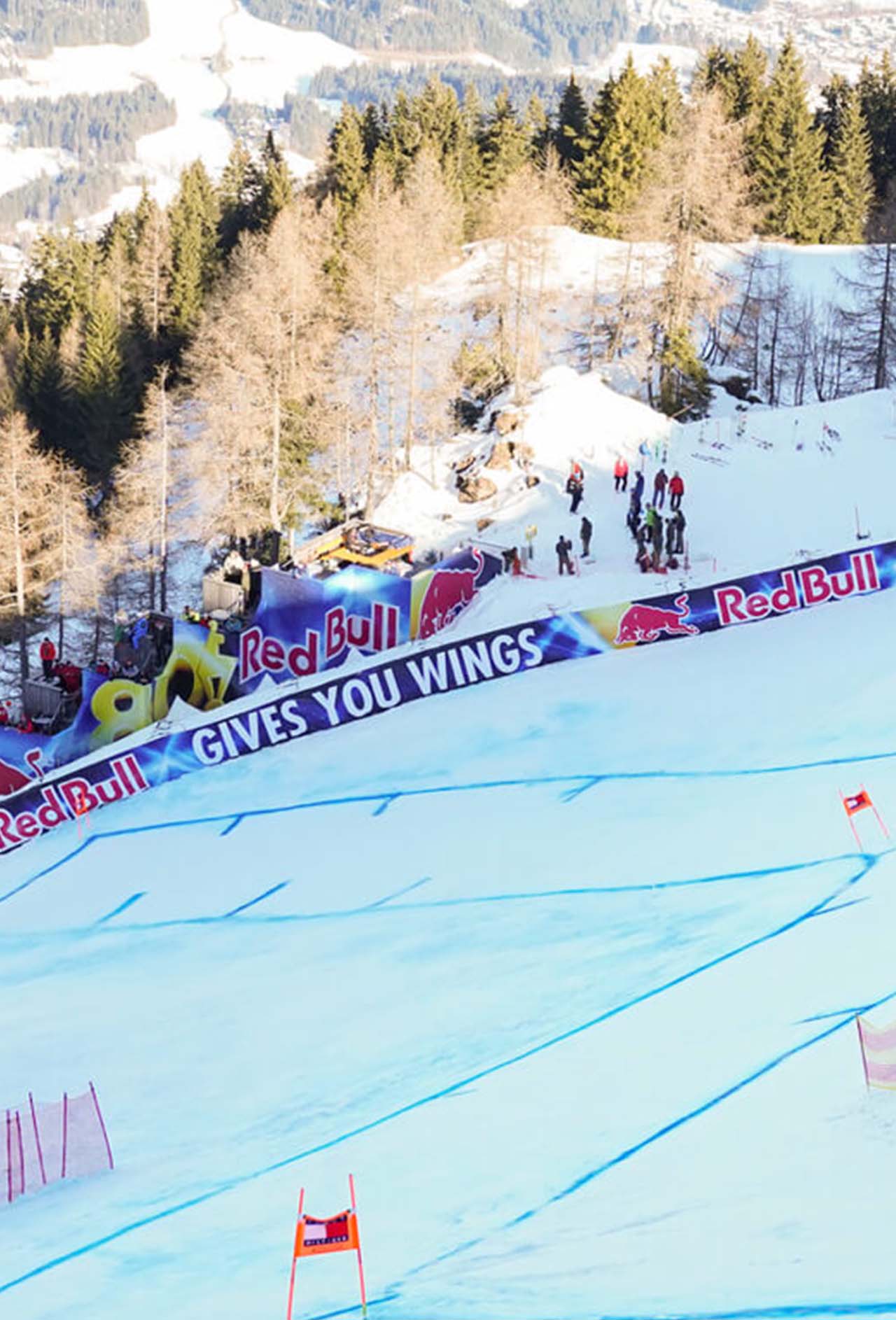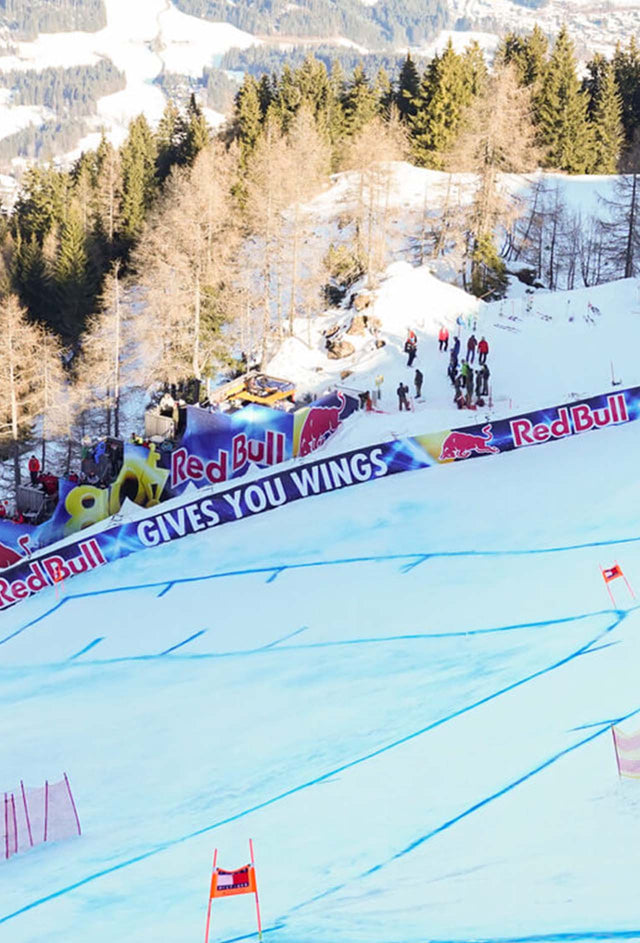January 19th, 2023 | Helly Hansen
The most spectacular downhill event in the world is celebrating its 83rd anniversary. Since the very beginning, the organizing committee of the Kitzbühel Ski Club have developed this race into what has become a legend in the world of sports. In Helly Hansen, we are proud to support the crew in charge of this epic competition — a crew that works year-round in demanding conditions to create a mythical course that truly puts skiers to the test.
The Streif is the downhill event of the Hahnenkamm Races weekend, where the Audi FIS World Cup Super G, Slalom, and Downhill events take place every winter. Although the downhill course is different and unique every year, there’s a few characteristics that meet the competitors every year: It’s 3,312 meters long with a maximum steepness of 40,4° (85%). In other words, it’s insanely steep and incredibly difficult. At the start gate, the skiers accelerate from 0 to 60 km/h in less than 3 seconds, while they reach speeds of 120 km/h in the steepest part. The Streif speed record was claimed by Michael Walchhofer in 2006 with a mind-blowing 153 km/h.
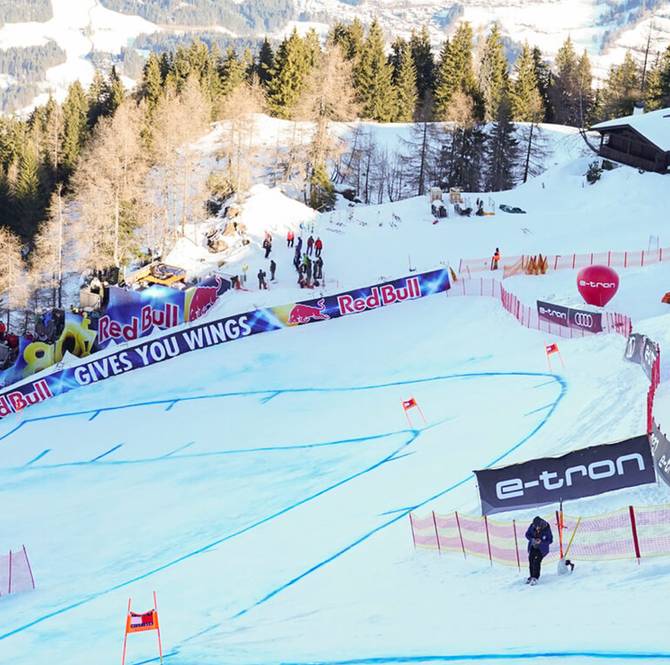
BEHIND THE LEGEND
The event annually attracts 90,000 visitors and over 300 million TV spectators, and the attention is welcomed by the team that work year-round to bring it all to life. The Streif is the pride and joy of the Kitzbühel Ski Club (KSC), who initiated the event and has organized and managed it since the first edition in 1931, the same year the club was born. Since then, the race and the club’s history has run parallel, creating synergies that made the Hahnenkamm races into the most legendary skiing competition of them all.
During the racing weekend, a KSC-team of about 1,500 people gravitate around the Streif, making sure everything runs smoothly. It’s the culmination of a year’s hard work, having worked continuously since last year’s race in all kinds of weather to prepare and take care of the course. For Helly Hansen, it’s the perfect testing ground for the performance and durability of our gear, and it helps us push the development of our ski wear even further.
There isn’t a manual for preparing the Streif: Everything is built on the experience, knowledge and intuition of the KSC team. Thanks to Jan Überall, General Secretary of KSC, we get a closer look at the year-around development of the race.
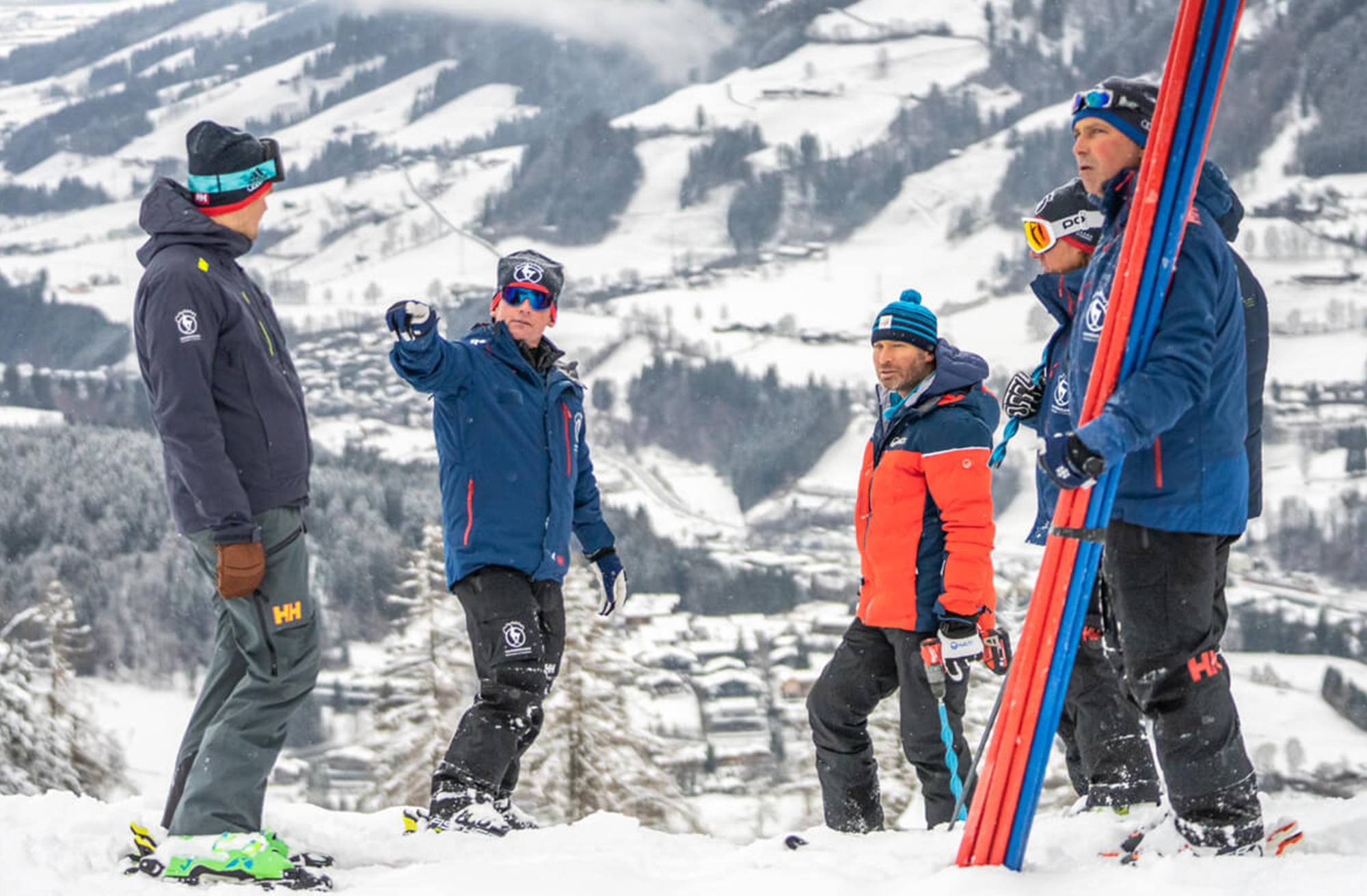
THE HAHNENKAMM RACE IS CONSIDERED ONE OF THE HARDEST AND MOST SPECTACULAR SKI RACES IN THE WORLD. IS THE JOB OF THE CREW PREPARING THE SLOPES ALSO CONSIDERED TO BE ONE OF THE MOST DEMANDING JOBS IN WINTER SPORTS?
What makes Hahnenkamm so unique is the overall package. Preparing the slopes is demanding, that’s right. Because the terrain is extremely steep. Even the Austrian army sees our slope as an ideal practice area for soldiers to practice walking with crampons. But everyone in our team has been active on the mountain for years, knowing all possible conditions and scenarios after going through countless training courses. As a result, the risks are limited. But of course, things can happen.
WHAT ARE THE MOST IMPORTANT TASKS OF THE SLOPE TEAM? AND IS IT TRUE THAT THE STREIF IS A YEAR-ROUND OPERATION?
The racetrack is in “management” all year round. Our KSC mountain team is responsible for this, and their tasks are defined by the Chief of Piste in coordination with the Race director. The very first step is the refurbishing of the slope right after the race. The nets are controlled and taken down. After that, activities range from mowing the areas in the summer, to installing safety nets in the fall and creating mobile avalanche barriers. To make sure the snow stays firm on the steep terrain, terrain corrections are also necessary in some areas. The whole year round, the team works on the infrastructure and the cabling systems and maintains safety installations.
Then we need to make sure we have enough snow to model the racecourse in order to meet the athletes’ expectations of this being at the same level as previous years. The biggest challenge though, is preparing the slope manually, because the snow groomers don’t work in steep terrain with gradients up to 85%. Additionally, the risk of breaking the slopes is far too great.
HOW DO YOU TARGET CRITICAL DANGER POINTS?
The safety devices along the route have changed dramatically. Back in the days, it used to be nothing. Then the stack fence was added, and the critical points were secured with straw bales. However, they first got wet and then froze hard, so the effect was rather counterproductive.
The first A-net system came later and has of course been tested to see how it reacts in the event of a fall. During the Hahnenkamm races we use B-nets, which nowadays are among the most modern security systems.
We don’t really have any proper tests regarding the racetrack itself. We mainly rely on our years of experience. Together with the FIS Race Director for Speed, we create a report, which considers all measures taken to guarantee the maximum safety possible in the course of the race. This is a long-term growth process based on theory and practical experience.
WHAT ARE THE MOST IMPORTANT SAFETY MEASURES?
The most important safety caution taken is to keep the slope well prepared. If the slope is evenly prepared, there are less accidents. Then we need to make sure the nets are positioned properly. The so-called B-nets are crucial, and where it’s impossible to place them, we have A-nets.
In addition, we try to give the racers the longest braking distance possible. The more space they have for slowing down at the end, the safer it is.
HOW DO YOU DEAL WITH THE PRESSURE OF MAKING THE RACECOURSE AS ATTRACTIVE AS POSSIBLE FOR THE AUDIENCE AND SIMULTANEOUSLY MAINTAIN ATHLETES’ SAFETY?
It is not really any pressure because we always try to make the racetrack as safe as possible. It’s total nonsense that we would artificially make the slope more difficult than it already is. In fact, the natural terrain dictates the difficulties and makes the Streif what it is: the hardest downhill of the circuit.
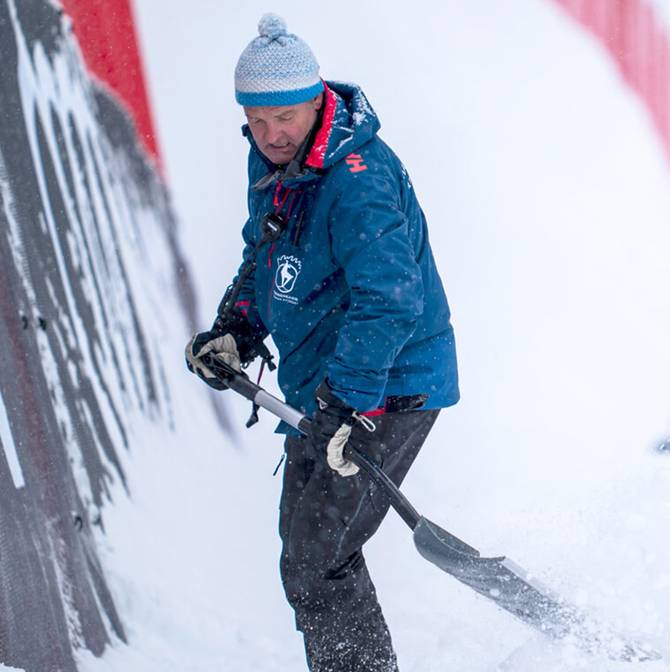
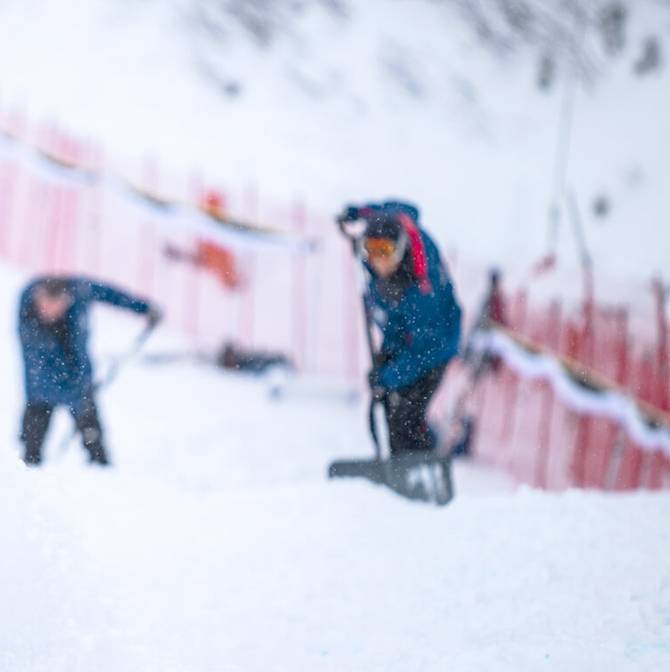
THE FAMOUS HAHNENKAMM RACES HAVE BEEN ORGANIZED BY THE KITZBÜHELER SKI CLUB SINCE 1931. WHAT HAS CHANGED MOST SIGNIFICANTLY SINCE THEN?
A lot has changed since the Streif was first organized. Starting with the use of machines for slope preparation and the use of artificial snow, but so much more has changed. For example, back in the days, you would often see green grass coming through. Nowadays, there must be a consistent foundation and this needs to have a certain depth to ensure the obligatory drill length for the race flags.
In the past, the armed forces were often entrusted with preparing the slopes. Today, the soldiers are only supporting us for a week on site or helping us in extreme situations, for example, during the heavy snowfall in 2018 to help remove snow from the slope.
HAVE YOU ALWAYS WORKED WITH THE SAME TRUSTED TOOLS?
The basic preparation is mainly done using snow groomers. The most important tools when it comes to the manual preparation of the slopes have always included crampons, shovels and skis. In the steep sections, excess snow is removed as it slips off, and finally transported to deeper areas to level them up, using snow blowers and dump trucks. In the flat areas of the slope we use specially equipped quads with snow plows.
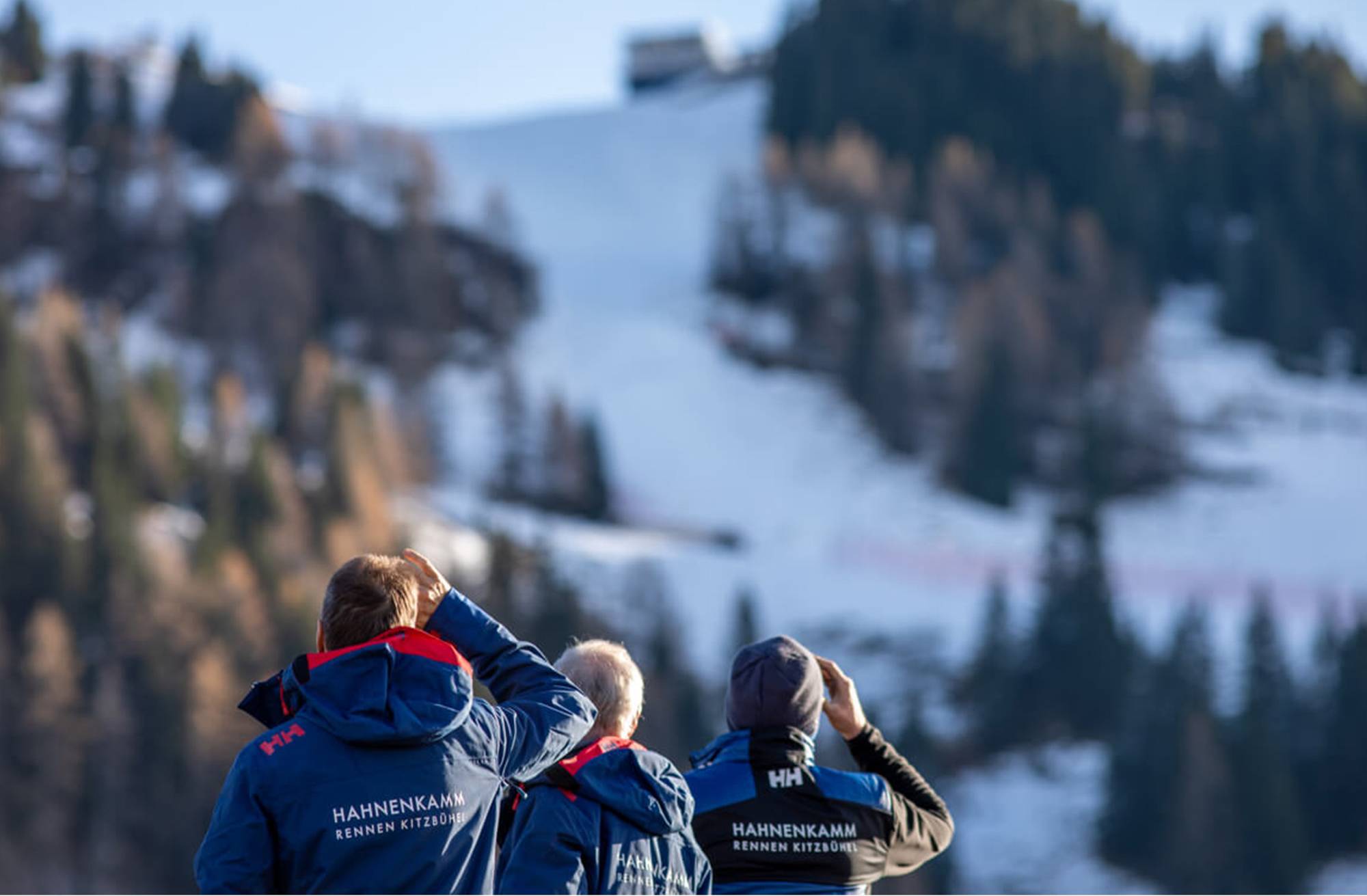
IS ARTIFICIAL SNOW A NEW CHALLENGE FOR GROOMING THE SLOPES OR HAS THIS NOT CHANGED MUCH COMPARED TO PREVIOUS YEARS?
Artificial snow offers far more options for a correctly prepared slope than pure natural snow. Currently we do not use snow farming to prepare the racetrack. With Bergbahn AG Kitzbühel, we have a strong partner on our side who can take care of the preparations and snowmaking in low-snow winters.
WHAT ARE THE VERY LAST THINGS TO BE DONE BEFORE THE START?
The jury needs to approve the racecourse and the safety chain needs to be ready. Finally, the racecourse needs to be free of people!
WHAT’S THE WORST THAT COULD HAPPEN NOW?
Of course, the worst that can happen is bad accidents during the race. Another risk which cannot be avoided is the weather. On the one hand, fog banks on the racecourse, leading to bad visibility. But also, warm temperatures, which is a high risk for the slope. But to a certain degree, salt can help. Specific salt can be put onto the snow, which pulls the moisture out of the melting snow, making it hard and increasing the grip.

